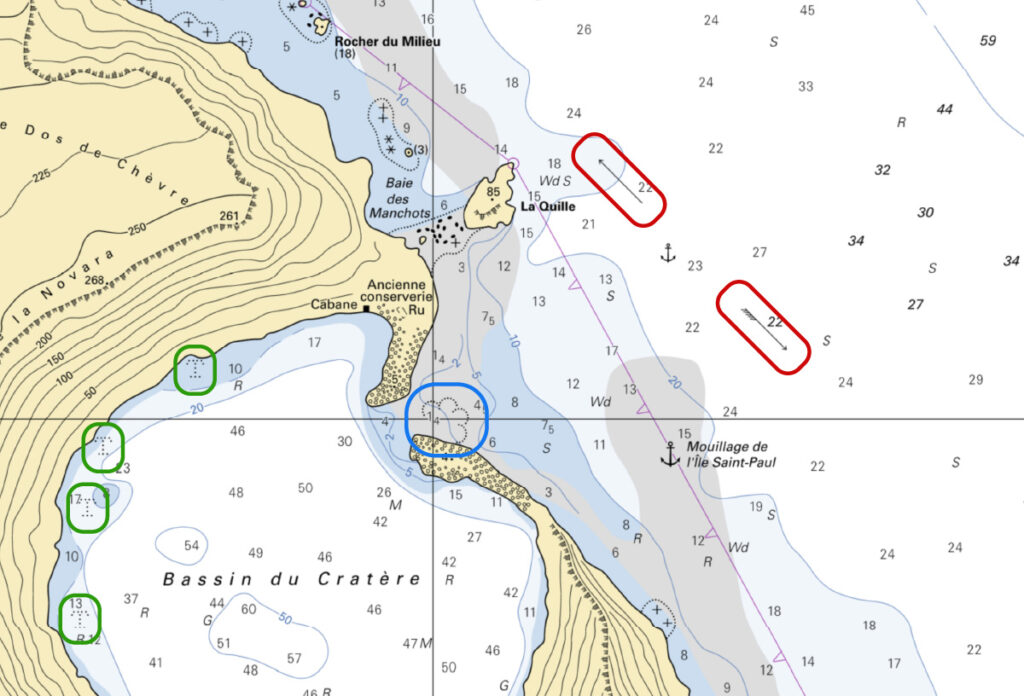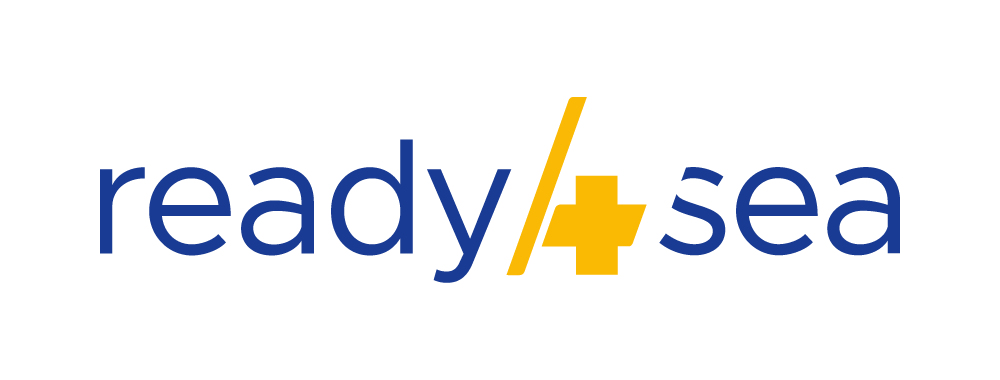This week in the Vendée Globe, Antoine Cornic anchored off St-Paul Island to repair his broken mainsail track ⛓️💥
To put the pictures shared by the TAAF into context, we looked up the SHOM nautical chart for this particular anchorage.
Questions
We spotted some arrows (circled in red 🔴). What do they mean?
Now, we’ve got some more questions for you today. It’s our Christmas present! 🎁
Within the crater, we also spotted several symbols, circled in green 🟢. What are they?
There’s also a kind of small cloud, in the center of the image, highlighted in blue 🔵. Here again, what does it represent?

And bonus question
If you’re in any doubt about what you’re seeing on a nautical chart, to find out for sure, which resource should you refer to? 📙
👉 Reply on one of our social media below. We’ll post the solution right here next Sunday!
PS: Don’t you think this place is crazy? We’d love to be able to dinghy into that crater! 🚣
Solutions
Thank you all for taking part in this quiz.
As many of you have correctly pointed out, the arrows circled in 🔴 show the direction of the tidal currents : ebbing stream for the simple arrow, and flood stream for the arrow with feathers on a single side (feathers on both sides would have depicted a more permanent, non-tidal current).
The 🟢 symbols are some kind of spring in the seabed. Most likely warm water since it’s inside a volcanic crater, but that’s not the topic here.
Finally, the cloud-like symbol highlighted in 🔵 warns that there may be breakers in the area, no doubt due to the very shallow threshold. Approaching the entrance thus would require very good, calm conditions and a lot of caution.
As for the bonus question
If in doubt on what symbols represent on a nautical chart, International Hydrographic Organization (IHO) publication INT 1 is the standard on symbols and abbreviations used on nautical charts.
Some countries publish it with the following national reference:
- 🇺🇸 NOAA US Chart No. 1
- 🇬🇧 UK Hydrographic Office Admiralty chart NP5011
- 🇿🇦 SANHO HO-6
- 🇨🇦 CHS Chart 1
- 🇫🇷 SHOM ouvrage 1D
- 🇩🇪 BSH Karte 1
- 🇳🇱 Koninklijke Marine Kaart1
- 🇮🇹 IIM 1111
- 🇪🇸 IHM INT 1
- 🇵🇹 IHP Carta 10Z01
- 🇨🇱 SHOA Carta N°1
- 🇧🇷 DHN Carta 12000
Our next quiz on anodes is now live and awaiting your answer!
